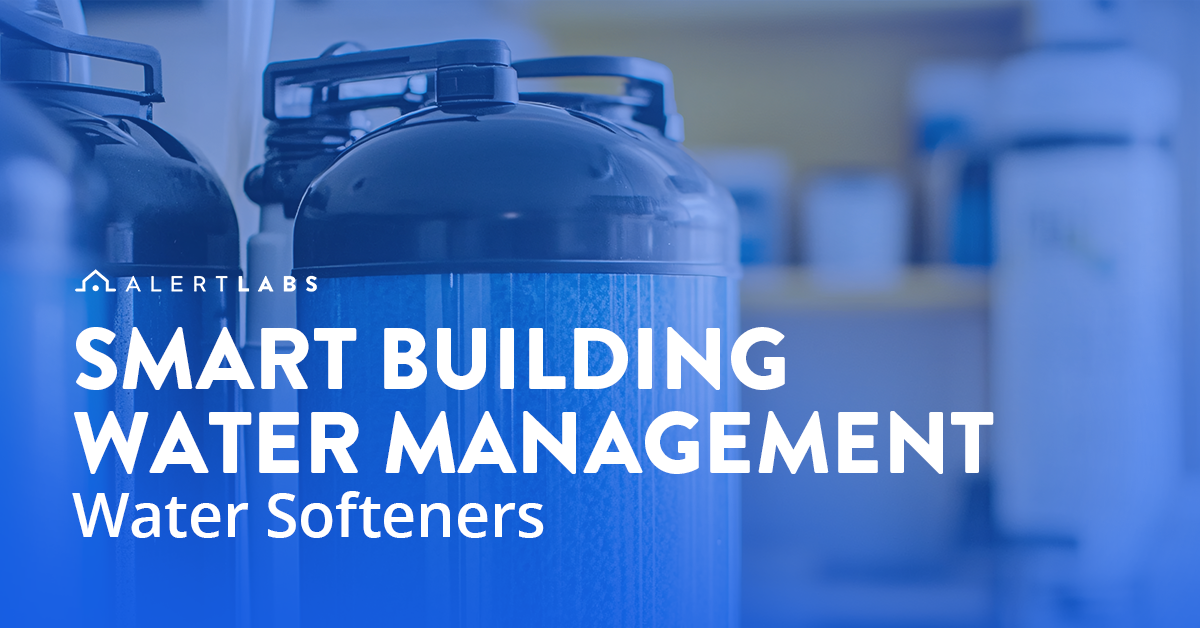Can a Water Softener Cause A High Water Bill at a Commercial Building?

Facilities managers, property owners, and sustainability directors often prioritize controlling operations costs. But much like a running toilet, malfunctioning or incorrectly configured water using appliances like a building's water softener can lead to significantly higher water bills.
How does a water softener use water?
Hard water gets its name from the fact that dissolved minerals such as iron, calcium and magnesium make it difficult (or "hard") to work up a soapy lather when doing laundry, for example. To soften water, it flows through a tank containing resin beads coated in sodium ions. As the water passes through, the positively charged minerals stick to the resin while the sodium ions are released into the water. Over time, the resin beads get saturated with the minerals and the system needs a flushing or regeneration cycle which involves substantial amounts of water (and salt).
How much water do softeners consume?
Water softeners are one of the most water-intensive appliances in commercial buildings. Under normal conditions, a commercial water softener typically uses between 75 and 150 gallons (285-570 liters) per regeneration cycle. If that cycle runs 2 or 3 times a week, monthly water use for the softener alone could add up to 600 to 1,800 gallons (2,270-6,810 liters). Larger commercial systems, such as those in multifamily properties or industrial applications can use around 250 to 1,000 pounds of salt per regeneration cycle, depending on the size and hardness of the water supply.
But, if it's regenerating too frequently or becomes stuck in a regeneration cycle, water use can increase dramatically. A continuously cycling water softener can waste 5,000 gallons (18,900 liters) per month.
Across North America, water softeners use billions of gallons of water annually under typical operation. If you factor in malfunctioning systems, the total volume used is much higher. Hidden water loss means more wasted water and higher bills.
How can you tell if a water softener is causing higher water bills?
The following are indications that a malfunctioning or incorrectly configured water softener is causing water costs to spike:
- Constant or irregular cycling sounds from the water softener.
- Excessive salt usage
- Visible leaks or pooling water near equipment
How often should your water softener regenerate?
How often your water softener will flush itself out with fresh water depends on a variety of factors:
- The hardness level of your water before filtering
- The iron level (if any) before filtering
- The pH level before filtering
- How many people in your household
- Tank capacity
Generally speaking, the harder the water, the more often it will need to regenerate. And the more often it regenerates will correlate to your resulting water bill.
What are effective strategies for monitoring water softeners to reduce water costs?
Water softeners and all parts of a building's water system benefit from the following:
- Regular Inspection: Schedule routine checks of water softener settings and functionality
- Real-Time Water Monitoring: Implement an intelligent water monitoring solution to detect abnormal water usage patterns immediately.
- Leak Detection Systems: Deploy leak detection sensors near water softeners and associated plumbing to provide instant alerts for potential issues.
- Salt Efficiency Audits: Evaluate the regeneration cycle frequency and dosage settings to reduce salt waste by up to 30%
Proactive solutions for long-term savings
Integrating real-time water monitoring and leak detection technology can significantly reduce unexpected expenses. By instantly alerting facilities teams to abnormal usage, organizations can prevent unnecessary water waste, reduce utility bills, and minimize the risk of water-related damage.
Understanding the hidden costs associated with waster softeners and implementing proactive monitoring measures helps facilities achieve greater operational efficiency and sustainability goals.




